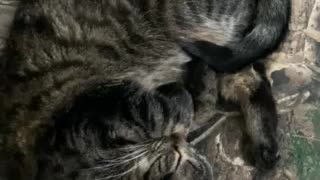Sleeping Beauty c. 1959 : The last hand-made Disney film
“We took the approach that we were going to kill that damned prince,” Wolfgang Reitherman once said of the dynamic sequence he directed in Sleeping Beauty. Overseen by Reitherman in a film co-directed by several of his fellow Nine Old Men, the fight between Prince Phillip and Maleficent in her dragon form feels like a moment Disney had been building to throughout its history as a studio. This sequence requisitions the best elements of Snow White’s retreat into the forest after she learns of the wicked queen’s plans to kill her and the arrival of the demon in Fantasia’s “Night on Bald Mountain” sequence, combining them into one climactic expression of storytelling bliss. Like many of the studio’s earliest efforts, Sleeping Beauty’s animation techniques owe a lot to the expressionistic quality of silent film. Phillip’s galloping horse and Maleficent’s transformation are clear images of good and evil that are immediately understood and brought to a thrilling conclusion of explosive greens, twisting brambles, and the deadly fires of Hell.
But Sleeping Beauty’s transcendence is not confined to just one scene, and Walt Disney’s decision to film with Super Technirama 70-mm. — the first wide release to utilize the prestige format — only emphasized the film’s glittering assemblage of artistic achievements. There is the expansive, richly painted background work of artist Eyvind Earle. There is also the beautiful color work depicting the three fairy godmothers and their planning of Aurora’s birthday, which Floyd Norman, Disney’s first Black animator, helped create. And there is the arrival of Maleficent, overseen by Marc Davis, whose villainy debuts with a clap of thunder and green fire, dominating the tone and texture of the film’s imagery. That’s not to mention the other remarkable animators who worked on the production in varying capacities, including Chuck Jones and Don Bluth.
Despite all this spectacle, Sleeping Beauty did not find its audience upon release, and it would signal the end of an era for Disney. In the future, the studio would adopt animation shortcuts and digital techniques, and Sleeping Beauty would stand as the last film the studio allowed to be built entirely by the hands of its creators.
https://www.vulture.com/article/most-influential-best-scenes-animation-history.html
Full video can be bought on Amazon:
https://www.amazon.com/Sleeping-Beauty-Mary-Costa/dp/B07WW2FG7P
-
 1:18
1:18
roca
4 years agoSleeping Beauty 1959 DVD Menu
63 -
 0:07
0:07
rogergrendell65
3 years agoMy sleeping beauty
89 -
 0:48
0:48
Bella - Boston Terrier
3 years agoMy Beloved Sleeping Beauty
57 -
 0:23
0:23
GOATS!!!
3 years agoSleeping Goat Beauty Nakita! 04.2020
98 -
 0:11
0:11
MAGAMEMES3
3 years ago $0.68 earnedSleeping Biden
5.66K2 -
 1:25:47
1:25:47
Glenn Greenwald
13 hours agoProf. John Mearsheimer On Israel, Iran, Lebanon, and Widening War in the Middle East | SYSTEM UPDATE #346
89.3K121 -
 2:13:40
2:13:40
Roseanne Barr
8 hours agoThe Deep State Hit List with Ivan Raiklin | The Roseanne Barr Podcast #68
116K203 -
 9:35
9:35
Colion Noir
8 hours agoViral Tiktok Lady Claims To Have The Solution To Gun Violence, You Won't Believe This
47.4K107 -
 1:59:08
1:59:08
Danny Haiphong
10 hours agoBen Norton: Hezbollah REPELS Israel's Ground War, IDF STRIKES Russia Air Base–Is WW3 Next?
43.5K42 -
 58:47
58:47
Flyover Conservatives
1 day agoPort Shutdowns Paralyzing Global Trade: What You Need to Know - Clay Clark | FOC Show
51.1K8